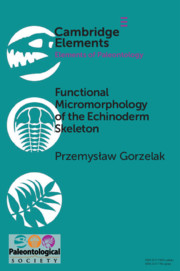Based on rich material (381 specimens examined) from two Cambrian echinoderm faunas, the early Cambrian Balang fauna and middle Cambrian Kaili fauna in Guizhou Province, South China, the taphonomy of gogiid echinoderms is described in detail, and the preservation of stereomic microstructure and organic remains of Cambrian gogiid echinoderms is reported here for the first time. Taphonomic considerations include entombment patterns, decay sequences, individual-specific diagenetic histories, unusual burial postures, selective disarticulation patterns, and post-mortem elongation. In particular, five categories of gogiid entombment patterns are proposed to describe the multi-directional orientations recorded at the burial time of articulated gogiids. Gogiid-bearing slabs of Guizhou material primarily (70%) display the type 2 entombment pattern (articulated gogiids preserved with fan-shaped brachioles); thus, most Guizhou gogiids were buried with brachioles preserved in feeding posture during obrution events. Balang gogiid faunas contain the oldest evidence of palaeoecological interactions among echinoderms and other indigenous taxa. In addition to pre-burial and post-burial decay, other potential causes for unusual disarticulation patterns exhibited by the gogiids from the lower Cambrian Balang Formation include pre-burial bio-disturbance and post-burial bioturbation based on ichnogenera, including Rusophycus and Planolites. Chemical analyses reveal that carbon, calcium, manganese and iron are the major elements responsible for the variety of colours exhibited by Guizhou gogiids. Three-dimensional stereomic microstructure (mean stereom pore size = 8.4–8.7 μm; average trabecular thickness = 4.5–4.6μm) occurs on the external surfaces of thecal plates in two gogiid species. Stereom preservation in calcite suggests that the dissolution of calcareous echinoderm plates, yielding characteristic mouldic preservation, is sub-Recent (after lithificaiton and exposure of gogiid-bearing, marine sedimentary successions on or near the land surface).


